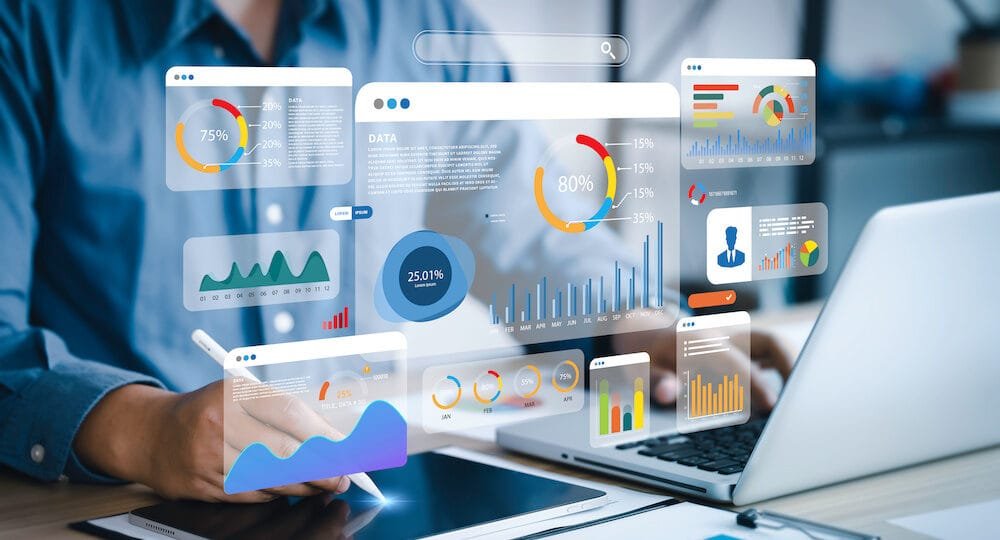What is Digital Marketing?
Digital Marketing refers to all marketing efforts that use the internet or an electronic device to connect with current and potential customers.
This includes:
- Promoting your business on Google, YouTube, Facebook, Instagram, and websites
- Sending marketing emails
- Running paid ads
- Ranking your website on search engines (SEO)
In simple words, Digital Marketing = Online promotion of your brand or product.
📊 Why is Digital Marketing So Important?
Today, 90% of consumers start their buying journey online.
Whether they want to buy a product, check reviews, or learn something new — they use Google or social media.
That’s why businesses must be visible online to grow.
✅ Key Benefits:
- Wider Reach: Connect with customers across the world.
- Cost-Effective: Cheaper than traditional ads like newspapers or TV.
- Targeted Audience: Show ads only to people who are interested.
- Real-Time Analytics: Track who clicked, bought, or signed up.
- High ROI: Better returns with proper strategy.
🧩 Major Types of Digital Marketing (With Examples)
1. 📈 Search Engine Optimization (SEO)
SEO helps your website appear on Google search when someone searches for your product or service.
✅ Key Techniques:
- Keyword research
- On-page SEO (headings, meta tags)
- Backlinks
- Website speed & mobile-friendliness
Search Engine Marketing (SEM) / Pay-Per-Click (PPC)
Paid advertisements on Google.
Example:
Run Google Ads to show your product on top of search results. You pay only when someone clicks.
Content Marketing
Creating valuable content to attract and educate users — blogs, videos, infographics, etc.
Example:
Writing a blog like this one! Or a YouTube video titled “5 Digital Marketing Tips for Small Businesses”
Social Media Marketing (SMM)
Using Facebook, Instagram, Twitter, LinkedIn, and YouTube to promote your brand.
Example:
Posting reels, stories, memes, product photos, contests, or ads.
Popular Tools:
- Meta Business Suite (for FB & Instagram)
- Creator Studio
- Canva (for content)
Email Marketing
Sending personalized emails to customers or subscribers to promote new products, discounts, or updates.
Example:
Sending a newsletter with the subject line “Flat 30% Off – Offer Ends Tonight!”
Top Email Tools:
- Mailchimp
- Brevo (Sendinblue)
- Zoho Mail
Affiliate Marketing
You pay other people (influencers, bloggers, websites) a commission to promote your products.
Example:
Amazon affiliate program or influencer links in YouTube descriptions.
Influencer Marketing
Collaborating with social media influencers to promote your brand.
Example:
Fashion brands partnering with Instagram models or tech brands with YouTube reviewers.
Digital Marketing Strategy (Step-by-Step)
To grow using digital marketing, follow this 5-step formula:
Step 1: Set Clear Goals
- Do you want more website traffic?
- Do you want to get leads or sell products?
Step 2: Understand Your Target Audience
- Who are they? Age, interests, problems?
- Which platforms do they use?
Step 3: Select Right Channels
- Google Ads + SEO for traffic
- Instagram + YouTube for branding
- Email for conversion
Step 4: Create High-Quality Content
- Educational blogs
- Attractive videos
- Customer testimonials
- Offers, reels, ads
Step 5: Analyze and Improve
- Use tools like Google Analytics and Facebook Insights
- Track: What’s working? What’s not?
The Future of Digital Marketing
- AI Tools like ChatGPT, Jasper will speed up content creation.
- Voice Search (e.g. “Hey Google…”) will increase, so optimize accordingly.
- Video Content will dominate: YouTube Shorts, Reels, TikTok.
- Personalization will be key — customers expect tailored experiences.
- Data privacy will become more important (cookies, GDPR, etc.).
✨ Final Thoughts
Digital Marketing is not a trend — it’s the foundation of modern business.
Whether you’re a freelancer, small business owner, startup, or big brand — building a digital presence is your most powerful tool for visibility, growth, and success.



